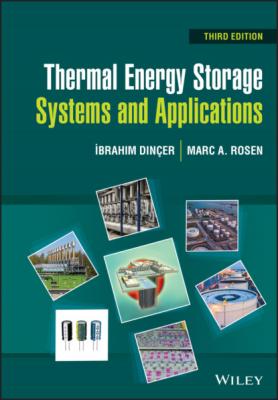Thermal Energy Storage Systems and Applications. Ibrahim Dincer
Читать онлайн.| Название | Thermal Energy Storage Systems and Applications |
|---|---|
| Автор произведения | Ibrahim Dincer |
| Жанр | Физика |
| Серия | |
| Издательство | Физика |
| Год выпуска | 0 |
| isbn | 9781119713142 |
As can be seen in Figure 1.5, there are two quadrants where n varies from zero to infinity and where it has a positive value. The slope of any curve is an important consideration when a reciprocating engine or compressor cycle is under consideration.
In thermodynamics, a number of problems involve the mixture of pure substances (e.g. ideal gases). In this regard, it is important to understand related aspects accordingly. Tables 1.2 and 1.3 summarize the relevant expressions and two ideal‐gas models: the Dalton model and the Amagat model. In the comparison presented, it is assumed that each gas is unaffected by the presence of other gases, and each is treated as an ideal gas. With respect to entropy, it is noted that an increase in entropy is dependent only upon the number of moles of ideal gases, and is independent of the chemical composition. Of course, when the gases in the mixture are distinguished, the entropy increases.
Table 1.3 Comparison of Dalton and Amagat models.
| Definition | Dalton model | Amagat model |
|---|---|---|
| P,V,T for the mixture | T and V are constant | T and P are constant |
| P tot = P = P1 + P2 + ⋯ + PN | V tot = V = V1 + V2 + ⋯ + VN | |
| Ideal‐gas equation for the mixture |
|
|
| Ideal‐gas equations for the components |
|
|
|
|
|
|
| : | : | |
|
|
|
1.4.15 Energy Transfer
Energy can be viewed as the capacity for doing work. Energy can take a number of forms during transfer such as thermal (heat), mechanical (work), electrical, and chemical. Thermal energy flows only from a higher to a lower temperature level unless external energy is added to reverse the process. The rate of energy transfer per unit time is called power.
1.4.16 Heat
The definitive experiment that showed that heat was a form of energy convertible into other forms, was carried out by a Scottish physicist, James Joule. Heat is the thermal form of energy, and heat transfer takes place when a temperature difference exists within a medium or between different media. Heat always requires a difference in temperature for its transfer. Higher temperature differences provide higher heat transfer rates. The units for heat are joules or kilojoules in the International system and the foot pound‐force or British thermal unit (Btu) in the English system. Following a common convention in thermodynamic calculations, heat transfer to a system is considered positive, while heat transfer from a system is negative. If there is no heat transfer involved in a process, it is called adiabatic.
1.4.17 Work
Work is the energy that is transferred by a difference in pressure or force of any kind and is subdivided into shaft work and flow work. Shaft work is the mechanical energy used to drive a mechanism such as a pump, compressor, or turbine. Flow work is the energy transferred into a system by fluid flowing into, or out of, the system. Both forms are usually expressed in kilojoules and on a unit mass basis as kJ/kg. By usual convention, work done by a system is considered positive and work done on a system (work input) is considered negative. The unit for power or rate of work is joule per second, which is a Watt (W).
1.4.18 The First Law of Thermodynamics
Thermodynamics is the science of energy and entropy, and the basis of thermodynamics is experimental observation. In thermodynamics, such observations were formed into four basic laws: the zeroth, first, second, and third laws of thermodynamics. The first and second laws of thermodynamics are the most common tools in practice due to the fact that transfers and conversions of energy are governed by these two laws, and in this chapter, we focus on these two laws.
The first law of thermodynamics (FLT) can be defined as the law of conservation of energy and states that in a closed system
